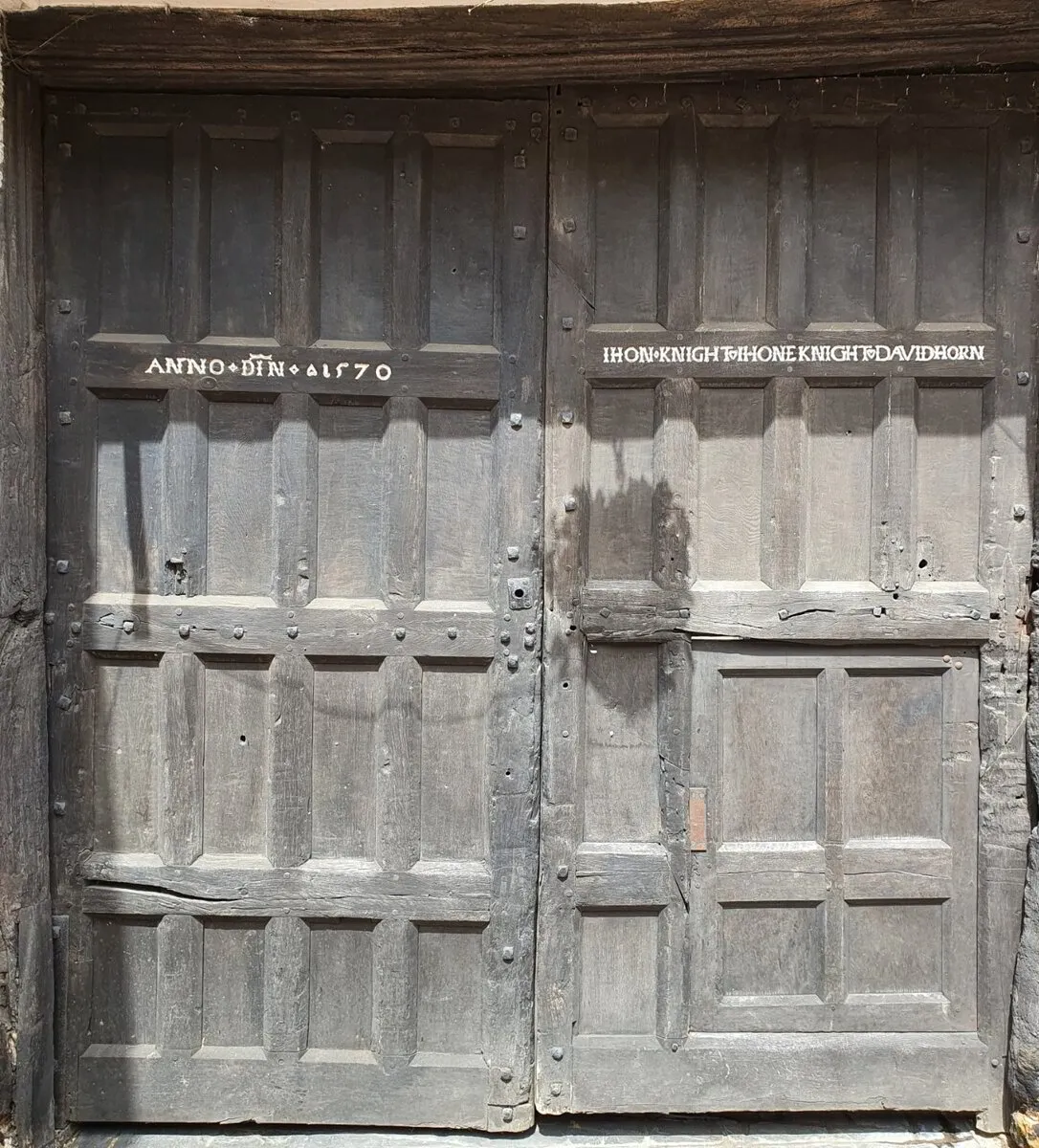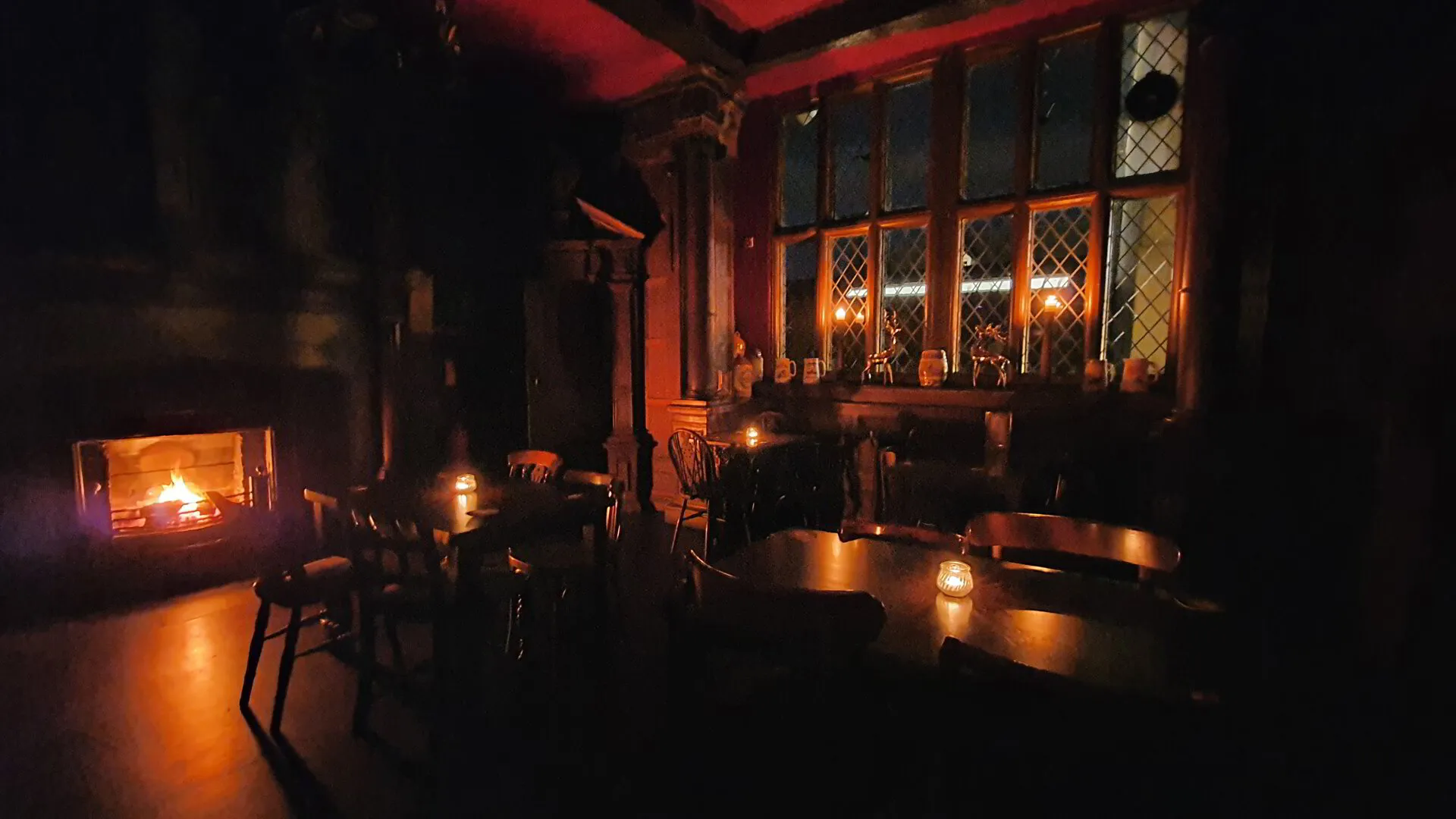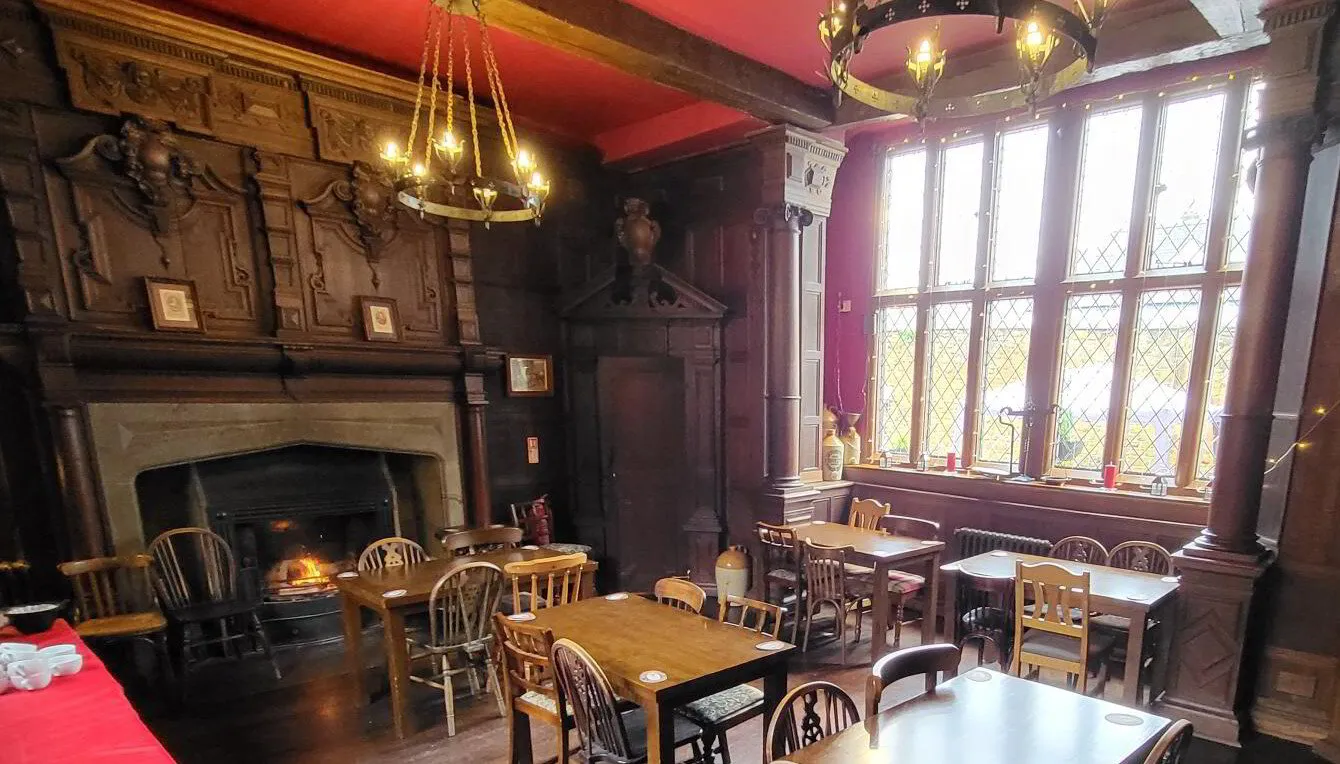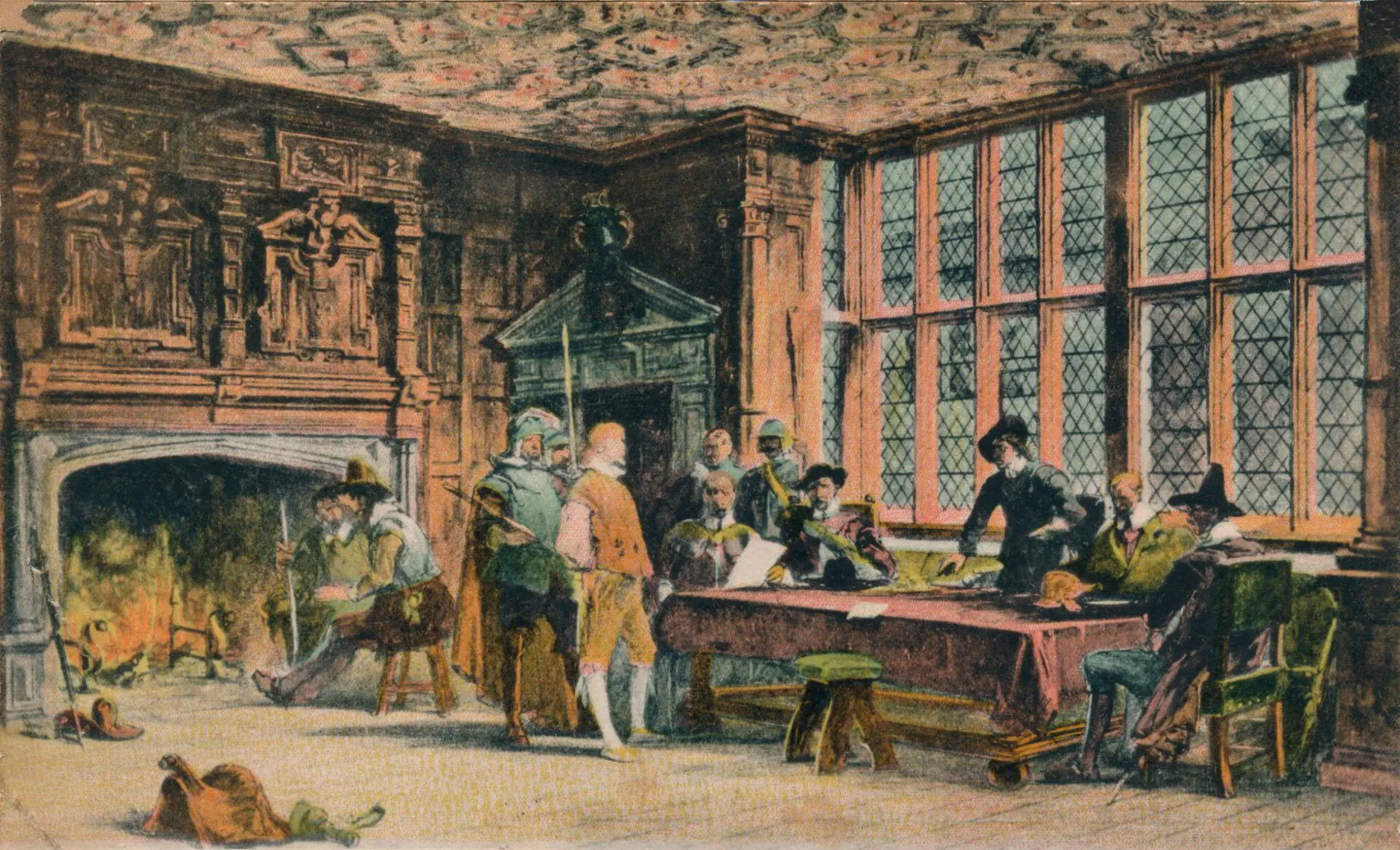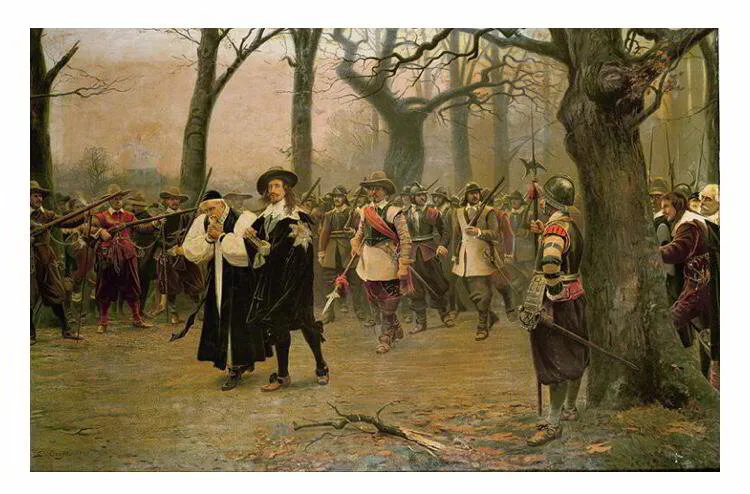With a history dating back to 1570…
Ye Olde Reine Deer Inn is considered one of the oldest inns in Banbury.
John Knight was a man of great respect in the town, a baker by trade and owner of property and land in Banbury. It’s believed he purchased the poorly developed plot of land in 1564, where The Reindeer now stands, and after extensive building work it opened as an inn between 1564 and 1570, with David Horn as the first landlord and tenant… hence the inscription on the large, gated entrance:
"IOHN-KNIGHT + IHONE KNIGHT + DAVID HORN ANNO DIN 1570"
It consisted of not only no.47 Parsons Street (the present Reindeer) but also no.48. When looking at the façades, you can see they are from two distinct periods, with no. 47 a slightly later edition. More buildings were put up at the back of the inn by 1637, surrounding the yard.
From around 1650 to 1685 Thomas Sutton became the landlord of The Reindeer. He issued a halfpenny token alongside other businesses in Banbury, dated 1666. It shows a deer on one side with the initials T S beneath and the legend ‘THOMAS SVTTON AT THE RAINDEAR IN BANBVRY’. These were unofficial tokens used as small change.
Afterwards, Bezaliel Knight, great-great-grandson of John Knight (who built the inn) sold it to Thomas Howes. He went about separating the two buildings and from here on in we know little of what happened to The Reindeer over the 18th century. It suggests the inn’s status had fallen, becoming a common tap room.
Before then, the great Globe Room came to be
Built between 1629 and 1637 by the Knight family, the Globe Room was of extreme superior architectural quality, marking the inn as a place of high standing in the town.
The room’s ornate Italianate style oak wooden panelling featured pillars, shields, scrolls and cherubs. There were also extravagant mullioned windows, the likes of which had never been previously seen in Banbury.
The garret and cellar to the inn were accessed through a door in The Globe Room, which can still be seen today, though it’s no longer in use. It’s also believed this was the entrance to the warren of tunnels underneath the town, which enabled undetectable movement to and from various buildings.
The ceiling of The Globe Room consisted of an opulent honeycomb plasterwork design, with symmetrical repeated imagery that included mermaids, flowers and foliage, all in high relief and beautifully coloured in a gentle sage green and salmon pink.
The Room That Moved
The Reindeer’s luck was down, and the Globe Room went unnoticed until a visit from the Architectural Association in 1885. After this, scholars from all over the world were interested and J. A. Gotch, one of the leaders of the Architectural Association, wrote about the room in a 1901 book on English architecture.
In the meantime, the ownership of the inn had passed to Hook Norton Brewery in 1898. Between 1909 and 1910 they tried selling the panelling from The Globe Room on several occasions, with much interest coming from America and a great deal of opposition from local and national bodies who recognised the historical value of the room.
Sadly, the panelling was removed and sold along with the plaster ceiling in 1912 to Lenygon and Co. based in London. They bought the ceiling, oak panelling, stone mullion window and 17th century fireplace for less than £1,000.
However, when the ceiling was removed, a double-barrelled flint-lock horse pistol was found, which had been resting on the upper side of the ceiling. The pistol itself had an interesting inscription engraved on it:
"Presented to Dick Turpin at the White Bear Inn, Drury Lane, Feb 7th 1735"
After much research, it was proved that Dick Turpin was present at The White Bear Inn on that specific date planning a robbery. Unfortunately, the pistol along with the oak panelling was taken to the purchasers Messrs Lenygon of Old Burlington Street, London.
The Globe Room’s Fate
Sadly, the ornate plaster ceiling no longer exists after it was destroyed where it was being stored during the Blitz.
Thankfully, replicas were made from the original panels in 1899.
A replica of The Globe Room’s original ceiling can be seen at Shoppenhangers Manor in Maidenhead and at Polesden Lacey House in the former boudoir of Mrs Margaret Greville, the previous owner of the house. The V&A Museum hold the original plaster cast too.
In 1964 the Banbury Historical Society took a keen interest in finding the whereabouts of The Globe Room’s original panelling, assuming it would most likely be in America. Unbelievably, after contacting the V&A Museum (who had recently been contacted offering the panels to them only a month before) they were notified that the original panelling was in fact still in London.
This launched a wave of activity between the Banbury Historical Society, locals and the town council to raise sufficient funds with generous donations from the national Art Fund and The Pilgrim Trust. The panels were finally purchased and brought back to their rightful home in 1981.
BELIEVED HISTORY
One of the most famous people thought to be associated with the Globe Room is Oliver Cromwell. Legend has it that this very room played a major part in the planning of the siege of Banbury Castle, Oxford Castle and the battle of Edgehill.
Oliver Cromwell was a well-known Parliamentarian and an avid objector of the Royalists and King Charles I’s ever-increasing taxes and his belief in the divine right of kings.
With Banbury being a Puritan town, it seems most likely that Oliver Cromwell would have had a Parliamentary stronghold here. And it is part of the room’s legend that The Globe was used for meetings and many trials and convictions of generals and high-ranking Royalists.
King Charles I surrendered and was handed over to Cromwell's forces in 1646 and was subsequently placed on house arrest, tried and convicted of treason.
Oliver Cromwell then spearheaded the campaign for the execution of King Charles I and was successful. Charles I was executed on 30th January 1649.
The Painting (see image) that hangs in The Globe Room is
"Charles I on his way to execution" - 1883 by Ernest Crofts.
Oliver Cromwell was not the only military figure to have supposedly visited the inn. Prince Rupert of the Rhine, the duke of Cumberland and leader of the Royalist Cavalry, was also reported to have stayed here. He was an important figure during the Civil War and tried on several occasions to free King Charles I.

